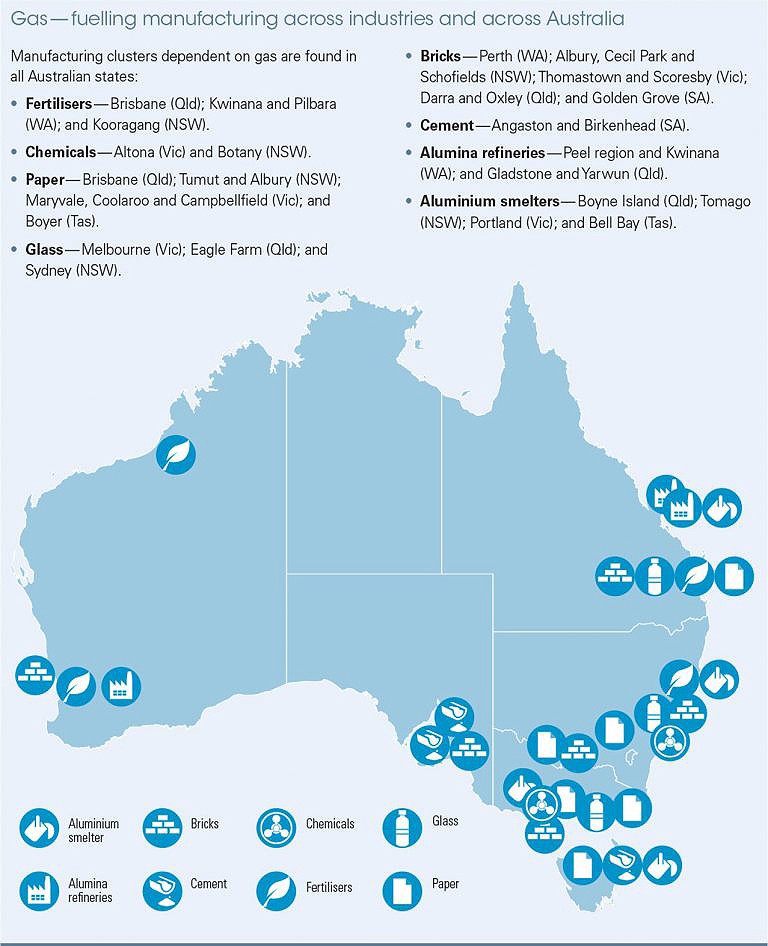Manufacturing with gas
Natural gas is both a source of energy and an essential raw material for manufacturing.
Almost one-third of the gas consumed in Australia is used by manufacturers.
Manufacturing in Australia is a $100 billion industry directly employing 890,000 people.
About 225,000 people work in manufacturing sectors that rely heavily on gas; another 500,000 people work in related industries that do business with these manufacturers.
The main industrial uses of natural gas and gas-derived products are producing:
- non-ferrous metals (e.g. aluminium, copper, zinc, tin)
- chemicals and polymers (e.g. fertilisers, antifreeze)
- non-metallic mineral products (e.g. glass, ceramics, cement, bricks)
- plastic packaging for foods and beverages.
- Gas is also needed in food preparation and processing, fermentation and brewing
Gas — Powering Industrial Processes
Gas is second only to oil as an energy source for manufacturing.
Gas is essential for many industrial processes — without gas to fire kilns and furnaces, it would be impossible to make everyday products such as glass, bricks, paper, cement, steel and alumina.
Many businesses meet their energy needs from their own gas-fired turbines.
Steel is galvanised with hot molten zinc to create a non-corrosive layer. Victoria-based GB Galvanising uses 50,000 gigajoules (GJ) of gas every year. No alternative fuel can maintain the necessary high temperatures.
Alumina refineries use gas for power generation and for refining bauxite to produce alumina, which is used to produce aluminium.
Alumina refining requires temperatures greater than 1100°C.
Gas is the only fuel that can achieve this temperature. Alcoa uses 95,000 terajoules (TJ) of gas each year in its three alumina refineries in Western Australia.
Gas — The Invisible Ingredient of Everyday Products
Natural gas is also a raw material (feedstock) for creating products such as fertilisers, explosives, paper, plastics and chemicals. In most cases, there is no substitute for gas.
Gas is used to produce ammonia, which is an important feedstock for several industries.
The most commonly used fertiliser in the world is urea, which is produced from ammonia.
Producing each tonne of urea requires 21GJ of natural gas — the same amount of gas that the average NSW household uses in a year.
Australian industries use 1.6 million tonnes of urea each year.
Ammonia is also used to make explosives and cleaning products, and in fermentation, brewing and winemaking.
Plastics are made from ethane, which is derived from natural gas.
At 850°C, steam is added to ethane to break it into ethylene.
This is then used to make plastics. These are used in:
- food packaging and wrapping
- plumbing and guttering
- fibres and textiles
- machine parts
- many other applications.


